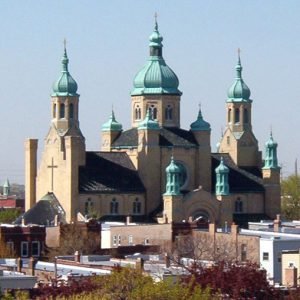 I interrupted this article on the history of the twelve major feasts of our Church with comments on both the feast of St. Michael the Archangel and the Angelic Host and also the Entrance of Mary into the Temple. Having shared that information, I would return to my original task of sharing with my readers why our major feasts came into being.
I interrupted this article on the history of the twelve major feasts of our Church with comments on both the feast of St. Michael the Archangel and the Angelic Host and also the Entrance of Mary into the Temple. Having shared that information, I would return to my original task of sharing with my readers why our major feasts came into being.
The last major feast that I was sharing information about was the Ascension of Our Lord. As I shared, it was originally observed as an adjust to the Resurrection and then later came to be celebrated on Pentecost. It then gradually became a feast unto itself. The natural reluctance to do away with established tradition probably accounts for the slower acceptance of the Ascension as an independent feast in comparison with the more rapid acceptance of the Raising of Lazarus and Palm Sunday.
Cyril of Jerusalem was no stranger to the polemical value of religious feasts. In the interpretation of our Eastern Christianity, the Ascension celebrates the transfer of Christ’s human body into heaven and the completion of his earthly mission, an important step in the process of salvation. It is the ultimate expression of His divine and human natures in one person. Because of this, and especially when linked with Cyril’s relationship to the Arians and his treatment of other liturgical feasts, it seems certain that he promoted the feast of the Ascension as a blow against the Arian heresy. In order to derive maximum results from this feast Cyril gave it greater visibility than it had previously had. Its separation from the core feast to which it had long been attached indicates a new interest in the Ascension’s theological significance in the mid-to- late fourth century and a new desire to emphasize that significance.
As a feast concerned with the nature of Christ, the Ascension was, realistically, potentially applicable to any controversy over the subject. And so it seems that in the fifth century the Feast of the Ascension was as much directed against the schismatic doctrine of Nestorianism as it had been in the fourth century against Arianism. In 428 Theodosius II appointed the Antiochene preacher Nestorius bishop of Constantinople. The new bishop soon attracted attention with his views on the nature of Christ and the role of the Virgin Mary. Nestorianism holds that there are two separate and distinct natures in Christ: the one – the Divine Word – chose to dwell in the other – the human, born of Mary.
I shall attempt in the next issue to again give a clearer understanding of the two heresies.
